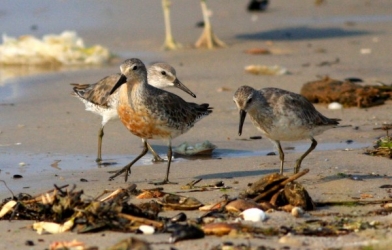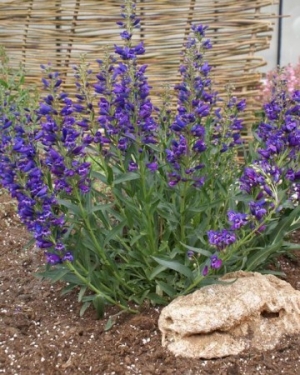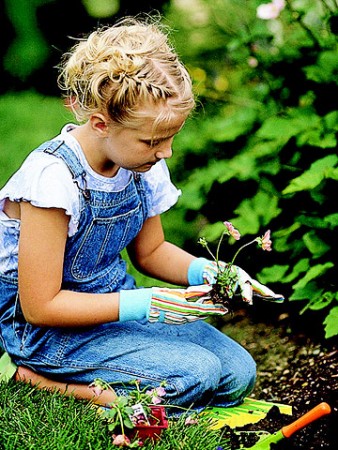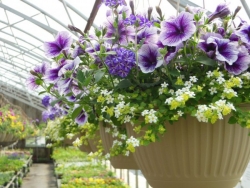 Some gardeners pull weeds, some spray with herbicides, others wage war another way- they eat them.
Some gardeners pull weeds, some spray with herbicides, others wage war another way- they eat them.
Last week I had the opportunity to go on a plant walk with self-taught master forager, Steve “Wildman” Brill. He has built his career on identifying, preparing and eating wild foods. Based in West Chester, NY, he leads tours and workshops for all ages on edible and medicinal wild plants. He is the author of several books and apps on the same topic. He is a character- a gangly, aging hippie with his pantlegs tucked into his socks, pith helmet, and repertoire of funny jokes and imitations to hold our interest for the two hour trip into the woods outside Huntingdon Valley.
For a kid who grew up in the country, most of the plants were not new- poke weed, garlic mustard, bouncing Bett, plantain, wood sorrel, mile-a-minute weed, etc but apart from wood sorrel, I have to admit I haven’t chowed down on most of them. Just because a plant IS edible, doesn’t mean I WANT to eat it.
Many plants are edible in some manner- the key is to identify what part, which time of year, and how to prepare them. Most parts of the poke weed plant are irritable to the digestive system except the young shoots after being boiled for two rounds of 15 minutes each. Then, I’m told, it is one of the most delicious vegetables. I’ll take his word for it.
I did eat the lemon-flavored leaves of mile-a-minute weed with great relish. This noxious weed has been over-running the edge of the woods and meadow on my property for years. I felt like I was getting a bit of my own back.
We also spent a fair amount of time identifying poison ivy (Above left). What child has never heard “Leaflets three, let it be”. There are lots of things that have three leaflets, but aren’t poison. Proper identification of this plant will make any foray into the woods much more pleasant.
The biggest benefit from this walk, and other programs like it, is to demystify the “wild”. My husband admitted to me, that growing up in the city- he could only identify a few plants when he moved out here; the woods and meadows surrounding our home just looked like a wall of green. The more familiarity he gained with plants, he can now identify them with ease. You don’t identify your friends or family members by their hair, eye color, or height, you just KNOW them. Garlic mustard is not garlic mustard because it has white flowers with 5 petals, upturned seed pods and serrated leaves, but because it IS garlic mustard.
I’m not going to stop going to the grocery store, but after this walk I will not hesitate to pop a handful of wild mulberries or wine berries in my mouth, chew on sweet cicely seeds, or rinse dirty hands with water and bouncing Bett leaves. Knowledge is power, and I look forward to helping my kids have a little more power in the world around them.
 My oldest grandson, who will soon exit first grade, exhibits a significant interest and knowledge of birds. Most of his knowledge has come indoors. When his outdoor observation skills match his knowledge I expect that he will be showing birds to his pop pop rather than the other way around.
My oldest grandson, who will soon exit first grade, exhibits a significant interest and knowledge of birds. Most of his knowledge has come indoors. When his outdoor observation skills match his knowledge I expect that he will be showing birds to his pop pop rather than the other way around. Need a summer blooming perennial that will beat the heat, and attract hummingbirds and butterfies? Stand about 2-3 feet in the garden and take scorching sun? How about one that prefers poor soil and little moisture? Penstemons might be for you.
Need a summer blooming perennial that will beat the heat, and attract hummingbirds and butterfies? Stand about 2-3 feet in the garden and take scorching sun? How about one that prefers poor soil and little moisture? Penstemons might be for you. Many garden writers and parents lament the fact that kids today don’t play outside anymore, let alone show an interest in gardening. They are more interested in their ipods, and Xboxes, than in pea pods or flower boxes. They are environmentally aware- my son harps on me about recycling, and they do get exposed to plants a bit at school. Who hasn’t received a marigold or sunflower seedling for Mother’s Day from a school-aged son or daughter? They seem primed- but how do you translate that to actually going outside, exploring the natural world and learning about plants?
Many garden writers and parents lament the fact that kids today don’t play outside anymore, let alone show an interest in gardening. They are more interested in their ipods, and Xboxes, than in pea pods or flower boxes. They are environmentally aware- my son harps on me about recycling, and they do get exposed to plants a bit at school. Who hasn’t received a marigold or sunflower seedling for Mother’s Day from a school-aged son or daughter? They seem primed- but how do you translate that to actually going outside, exploring the natural world and learning about plants? Have you ever bought beautiful hanging baskets around Mother’s Day, then by the middle of June they looked yellow and ratty? You are not alone. Here are some pointers to keeping hanging baskets nice all summer long.
Have you ever bought beautiful hanging baskets around Mother’s Day, then by the middle of June they looked yellow and ratty? You are not alone. Here are some pointers to keeping hanging baskets nice all summer long.